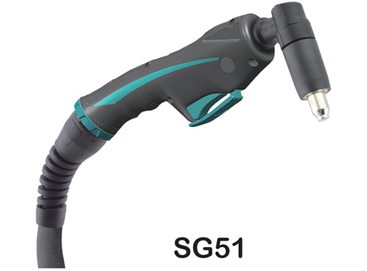Oxy-fuel and plasma cutting systems each have their own advantages and disadvantages. Find out more about how to choose the right one for your needs.
Metal cutting systems
Metal cutting is a common step in many welding jobs, whether in the fabrication shop or on site.
Two popular metal cutting processes are plasma arc cutting and oxy-fuel cutting. Both systems have their advantages and disadvantages, so determining the best fit depends on many factors, including the type and thickness of the metal to be cut, the location of the work, the available power resources and the cost.
.jpg)
Plasma Cutting Machine
Oxyfuel-containing torches have long been a popular choice for cutting metal due to their portability. However, advances in technology have made plasma a more portable option. Learn more about the basics of each process and the factors to consider when selecting one for your application.
The basics of plasma cutting
Plasma cutters are used to perform cutting and air planing operations, and a common handheld system is capable of cutting a maximum metal thickness of approximately 1". Plasma typically requires a source of compressed air and electricity. These are issues to consider when the application requires portability, although the reduced size and weight of plasma cutting machines (some of the smaller weight machines weigh about 20 pounds) make them a lighter option than ever before. Also, the need for power is not an issue in many locations where an engine-driven welder/generator is not normally required on site.
The basics of oxy-fuel cutting
By cutting oxygen fuel, an oxygen/gas flame preheats the steel to its ignition temperature. A high-powered oxygen jet is then directed at the metal, thereby creating a chemical reaction between the oxygen and the metal to form iron oxide (also known as slag). The high-powered oxygen jet removes the slag from the cut.

Plasma Cutting Torch
When using a torch with oxygenated fuel, the quality of the cut, the preheating time and the thickness of the metal can all be affected by the type of fuel gas used. Four basic fuel gases are most often used in combination with oxygen in this process: acetylene, propane, propylene and natural gas. The choice of fuel gas is usually based on the cutting application, cost, heat output and oxygen consumption.
Consider the application
When deciding between plasma and oxygen cutting systems, cost may also be a consideration. The initial investment in a plasma cutter is usually more expensive than an oxygen-fuelled system. However, oxygen torches require constant purchase of the necessary gas, whereas plasma cutters do not.
When choosing between a plasma cutting tool and an oxy-fuel cutting tool, ask yourself: which metal do I cut most often and what is the thickest metal that needs to be cut? If the job always requires thicker metals to be cut, the time and money saved by cutting thicker metals quickly with an oxygen-fuel system will vary. On the other hand, if precise cutting of stainless steel and aluminium is important, then a plasma system is the way to go.
The bottom line is this: plasma and oxygenated fuel have a place in most metalworking applications and many operations would benefit from having both systems in the arsenal.
Learn more about plasma cutting tool , welcome to contact us today or request a quote.



.jpg)



